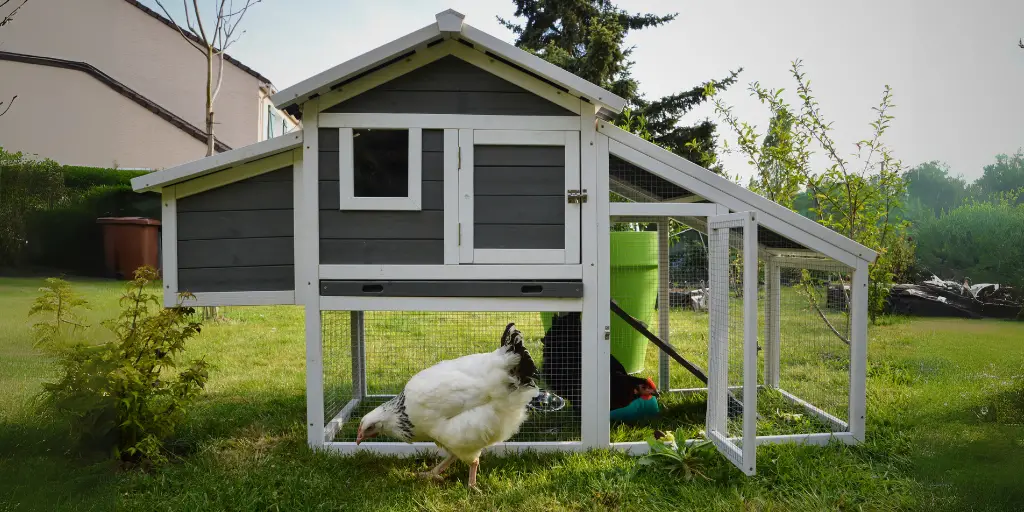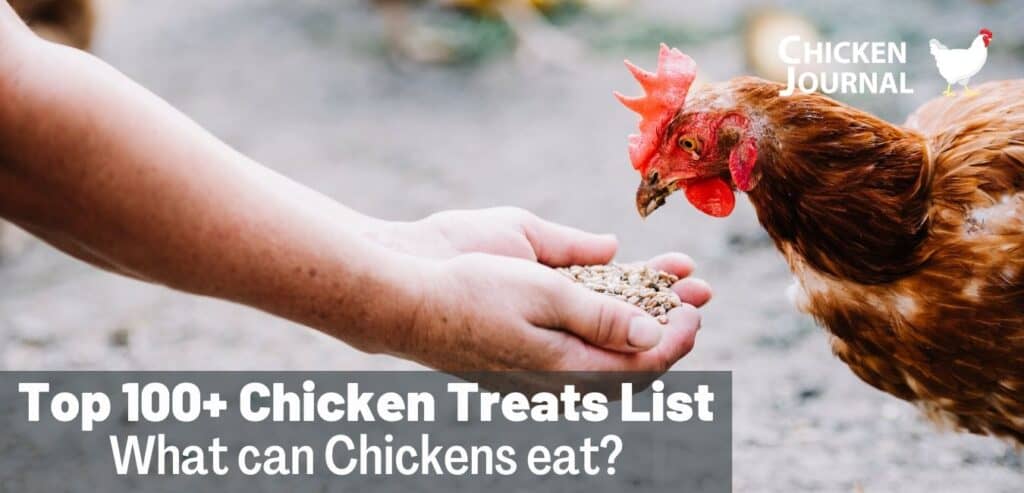Do you want to raise chicken breeds in urban backyards? Which chickens are best for backyard living farmers?
Some of the recommended chicken breeds for small urban backyard environments are:
- Rhode Island Reds
- Buff Orpingtons
- Plymouth Rocks
- Australorps
- Wyandottes
- Easter Eggers
- Silkies
- Sussex
- Cochins, and
- Brahmas
Which can be found in local stores.
They are small, quiet, and friendly, and they lay a lot of eggs. Your choice of chicken breed significantly affects the success of your chicken farming operation, be it your first venture or an expansion of your existing urban farm.
People know these chicken breeds for their egg-laying, personality, and kid-friendliness.
Let’s learn together about these wondrous breeds and together we will decide which birdies would be the best for the wonderful setting of your urban home.
Key Considerations Before Getting Chickens For Your Urban Backyard
Before walking down the lane of chicken breeds, you need to sort out a few key factors that will probably affect your success with urban chicken keeping.
It is important to note that the local environment and personal circumstances are priorities in determining which breeds of chickens will flourish in your backyard.
Confined Space and Radial Metrics
With each locality, there is a diverse set of rules concerning the keeping of domestic birds.
Find out the particular flock size, coop location, and rooster permit from your local zoning authority.
Space should also start from a minimum of 4 square feet per chicken in the coop and 10 square feet per bird in the run area in urban settings.
Some municipalities have also made it mandatory that the distances between coops and property lines are minuscule.
Effects of Climate
The climate of the area where you stay is one of the major factors that determines the success of the breeds in your yard. Look for both types of climates, summer, and winter:
- Hot climates need breeds with smaller combs and lighter feathering.
- Breeds that are compact and have dense feathers, and feathered feet are essential in cold areas.
- Moderate climates are more adaptable to the breed choice.
Noise Levels and Neighbor Issues
By living so close to your neighbors, you must consider the noise factor so you will not be a nuisance.
Mainly, hens are quiet but they do crow sometimes, always after laying eggs. Ask yourself:
- Selecting breeds that are both quiet and calm.
- Placing the coop away from neighbor houses.
- Engaging in ongoing dialogue to be a good neighbor.
- Desiring the chickens to be in their environment before washing them.
These are crucial factors that you need to pay attention to before determining which ones to raise so that you can teach chickens in urban areas.
Before getting backyard chickens, check local laws, space, climate, and resources.
10 Best Chicken Breeds for Urban Backyards
1. Rhode Island Reds
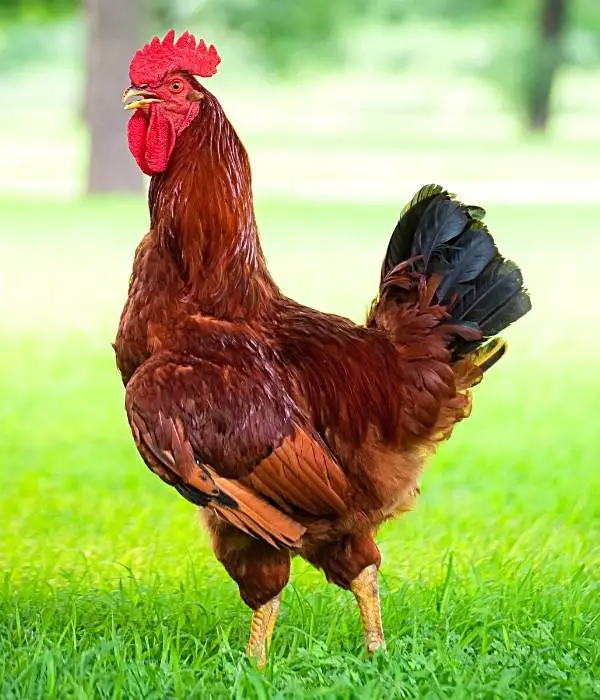
Adaptable and easy-going, Rhode Island Reds are great for beginner city chicken keepers.
Temperament and Personality
Some of these birds may not be aggressive, but they will probably unfairly dominate the kind and watchful animal group.
However, all of them, including children, are friendly towards us. Such personalities help us a lot when we choose the birds for our family, as they are friendly and can play with us.
Even though they can be a little pushy on the flock, they seldom show aggressive behavior towards their keepers.
Egg Production Performance
One major thing that will attract everyone’s attention to the Rhode Island Reds is their very strong egg-laying capability.
These birds are the best ones for egg-laying, besides their appearance.
They are also called the RIRs, as they lay eggs from 20-22 weeks and almost do it without stopping throughout the year.
They would produce around 250-300 big brown eggs on average annually.
Space and Housing Requirements
Rhode Island Reds are remarkably adaptable to space constraints, needing only 4 square feet in the barn and 8 to 10 square feet in the run per bird.
Their medium size makes them fit well into standard urban backyard setups, mostly limited in space.
Climate Adaptability
These hardy birds can prosper under different weather. Their thick feathers keep them safe during the cold of winter and, on the other hand, they can also handle hot summer when given proper shade and ventilation reasonably well.
Low Maintenance Care
Their robust health and easy care have made the Rhode Island Reds a favorite among beginning chicken farmers.
They dig well, making it easy for the birds to forage instead of feeding, and they have an extraordinary immune system that protects them from common poultry diseases.
Rhode Island Reds represent another breed that is among the best in terms of egg production, simplicity of maintenance, and good temper, which can be listed as vital points for urban beginners looking for reliable breeds in the backyard.
2. Buff Orpingtons
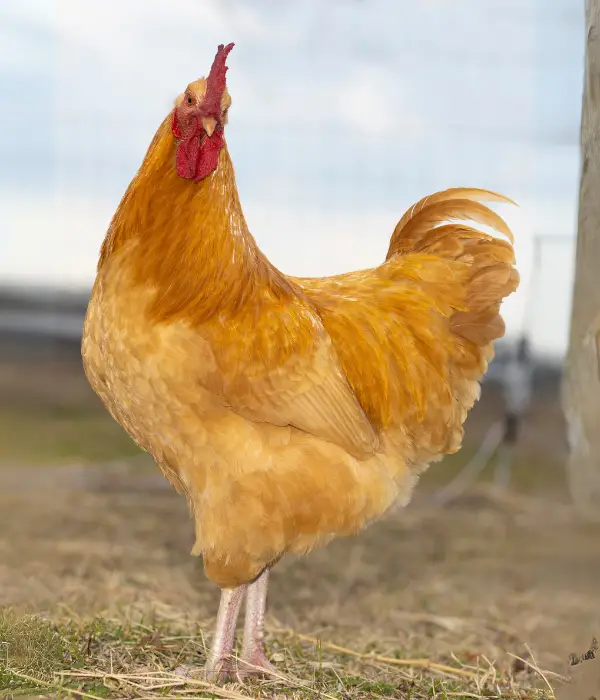
Buff Orpingtons, known for their peace-loving nature and incredible size, has rightfully earned the title of the gentle giant of the chicken world.
These golden-feathered creatures are a brilliant choice for urban backyards, particularly if you want an animal that is friendly and gentle.
Personality Traits
These birds exhibit a very calm and friendly disposition, making them perfectly suitable for families with children.
Their owners report they follow them around the yard and enjoy being handled.
Their gentle nature makes them ideal therapy chickens, and beginners seeking an easy-going breed often choose them.
Physical Characteristics
The celestial color of their golden feathers, which is quite a handful of color and yet puffy and fluffy distinguishes buff Orpingtons.
That these Hens are round-bodied and puffy makes them seem more huge than they are. Hens weigh on average 7-8 pounds and the roosters can reach up to 10 pounds.
Egg Production
The Buff Orpingtons are easy-going hens that can put out about 200-280 light brown eggs yearly.
They may not be the most prolific layers, but they pay for it with their consistent laying even during winter months. They are also excellent mothers, so they sometimes go broody.
Space and Care Requirements
Buff Orpingtons need 4-5 sq ft per bird in the coop, and 10 sq ft per bird in the run. They survive cold weather with thick feathers, but hot summers need extra care to prevent overheating.
Overall, the overarching quality of the animal stands out above Buff Orpingtons. Perfect for urban chicken keepers: friendly, adaptable hens with consistent egg laying.
3. Easter Eggers
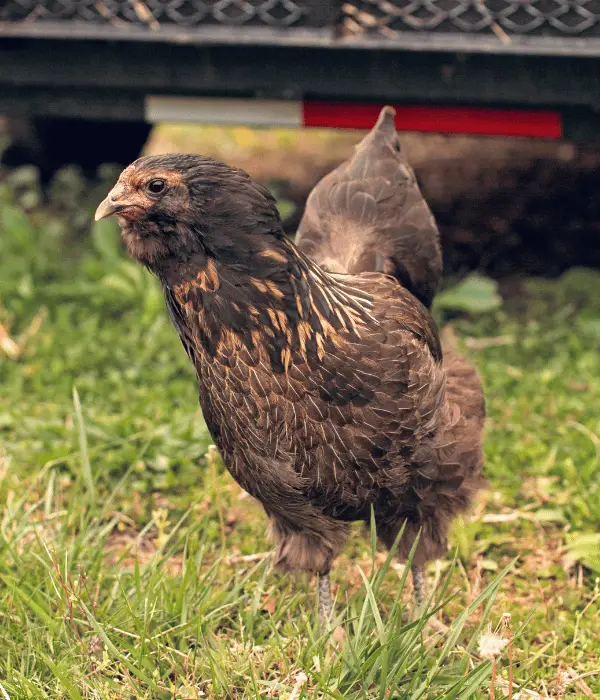
The colorful eggs of Easter Eggers are exciting and fun. So these hybrids containing the blue egging genes of plenty of breeds riding these birds are anyway very popular among city chicken keepers.
Colorful Egg Production
In these years, adhering to the norm in this situation would mean using 200-280 methods, leading to identical eggs from each hen.
The egg color options usually make for a diversified brood too. From sage color through sea foam color to olive color, the sprightly release of each egg is always a pretty cool adventure.
Temperament and Personality
The docile and friendly nature of the Easter Eggers makes them wonderful pets, particularly for families with children.
Their curious and active nature leads them to forage for food and they are too sufficient in both free-ranging and confined environments.
They have a very calm disposition, which makes them super easy to manage and suitable for beginners.
Space and Care Requirements
These medium-sized birds require little help from their humans to survive in urban settings.
Provide about 4 square feet per bird in their coops; they’ll adapt easily, and they can adjust to different climates without issue.
Their rigid feathers protect their bodies from the cold, while their lively nature will allow them to be cool in warm conditions.
Appearance Variety
Unlike standardized breeds, the Easter Eggers are, in fact, of different colors and patterns.
You might see birds with muffs and beards, different comb types, and countless feather color combinations. This variation contributes to the initial visual interest of your backyard flock.
Easter Eggers are friendly, adaptable chickens that lay colorful eggs, making them perfect for urban backyards.
Their diverse appearance and easy-going nature combine beauty with practicality.
4. Plymouth Rocks
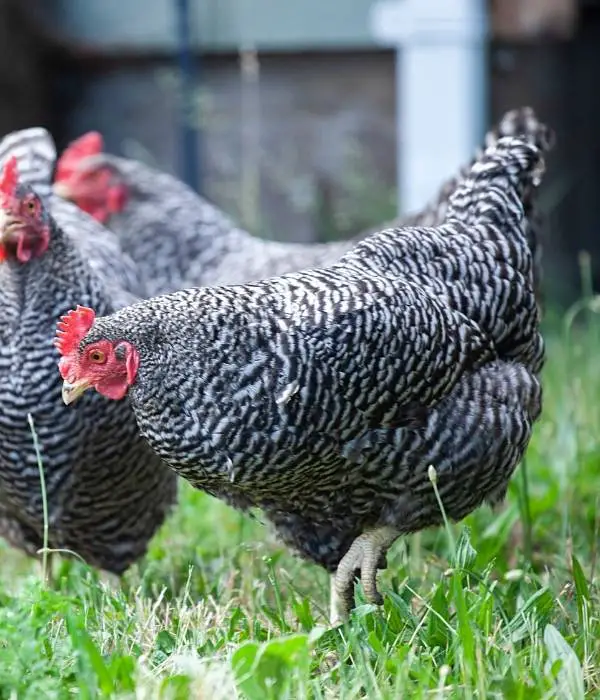
Plymouth Rocks are one of the most versatile chicken breeds for urban backyards.
These friendly birds, recognized as excellent all-rounders and able to become perfect companions even for beginners, have more than enough tutorials available online for first-time chicken owners.
Appearance and Size
Their uniquely patterned black-and-white striped feathers easily identify Plymouth Rocks, especially Barred ones.
They are medium-sized birds that are the best fit for essential-sized urban spaces, by the way; hens weigh about 7.5 pounds and roosters may weigh up to about 9.5 pounds.
Egg Production
These are the ones to rely on since they have a 200-280 brown egg production capacity annually.
Their uniform laying pattern makes them the ideal option if you want to obtain 4-5 of such eggs per week regardless of what others are doing in winter.
Temperament
Plymouth rocks are famed for their passive character and welcoming disposition towards human beings.
Hence, they can successfully adapt to confinement in urban spaces, and on the occasion of being let out, they will use their forage skills.
Climate Adaptability
Hardy and vigorous are the two words that answer the question of what these birds are like in winter and moderately hot weather.
Excellent insulation, thanks to their thick feathers, is a characteristic of these birds, although they seek shade during the hottest summer days.
Care Requirements
Plymouth Rocks are low-maintenance birds that require routine care:
- Feed regularly with a quality layer feed
- Clean, fresh water daily
- Basic health monitoring
- Standard coop maintenance
Plymouth Rocks are urban backyard chickens that are easy to keep for their beginner-friendly requirements. They offer a steady supply of eggs and are friendly and, thus do not prefer specific climates.
5. Wyandottes
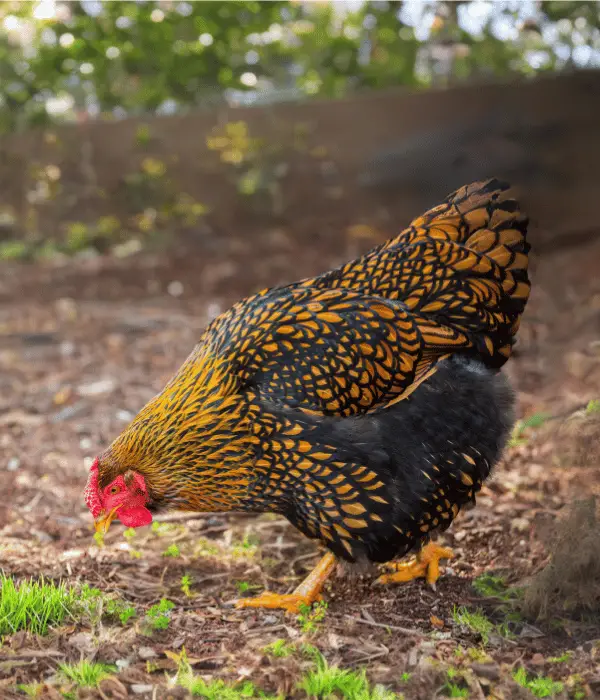
Wyandottes are one of the most beautiful chicken breeds for urban backyards. Uniquely, these birds combine fun and beautiful colors with functionality. They are among the most versatile species for backyard flocks.
Appearance and Temperament
Wyandottes have a very peculiar wedge-shaped fluffy top head and a rounded body. They also have such personalities children will not love that I cannot imagine them.
Conversely, this breed exhibits more than sociability. Cats and even other chickens will accept them if they slow down a bit when all the other flocks are eating.
Wyandotte plumage is visually appealing. These birds are calm, the best for any close-quarter life.
Space and Climate Adaptability
Wyandottes fancy narrow cages, tin, and other metals or limited space they want to dwell in and they are also very adaptable.
They are also great for urban locations because of that they have the potential to withstand warm winters and cool summers.
Each bird requires approximately 4 square feet in a coop.
Production Benefits
They have a regular output of 200-240 brown eggs per year. Additionally, their thick musculature allows them to be an excellent meat source.
Wyandottes maintain their high summer egg production over winter, which means the farm place will pay all year.
Care Requirements
- Routine feather care
- Dedicated feeding schedule
- Basic healthcare checkups
- You should clean the coop weekly.
Clean nesting boxes and adequate ventilation are some examples of the minor conveniences that Wyandottes require in their living area, even though they are an incredibly resilient breed.
Wyandottes are hardy, adaptable chickens that are great for urban homes because they can produce eggs consistently with less effort and grow practically anywhere and in the smallest areas.
6. Sussex
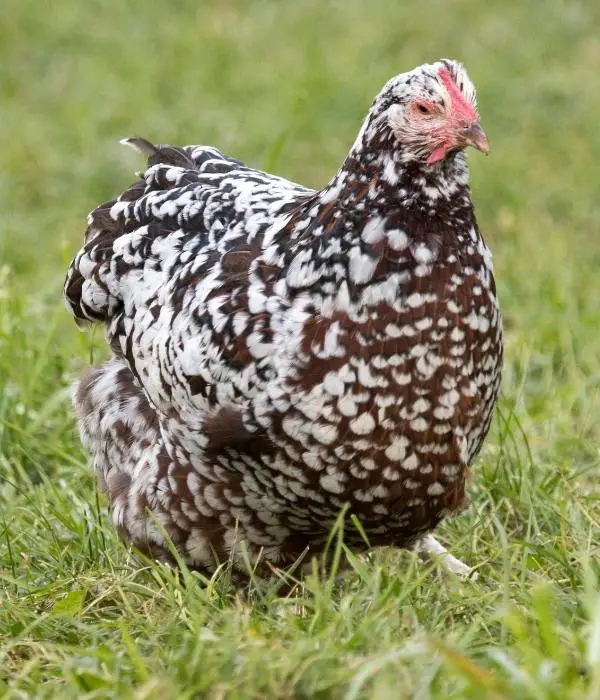
The Sussex breed is one of the perfect chicken breeds for urban backyards where tending to the neighbors is a top priority.
They are sweet birds, and their calm and noiseless behavior makes them the most suitable for a residence.
Gentle Temperament
Sussex chickens are friendly and docile, contributing to their suitability for families with small children.
They are very pliable in their handling and are docile, leaving behind most of their neighbor disturbance factor and thus creating a calming environment in the backyard.
Noise Level
If you compare it to some other species, you might say that Sussex chickens are layers that make little noise.
They will announce their egg-laying endeavors with a light cluck instead of a loud, prolonged squawk.
This makes them especially suitable for urban areas where there might be a noise restriction in place.
Space Adaptation
These medium-sized birds can easily adapt to small living spaces, but they prefer having sufficient space for foraging.
Three or four Sussex chickens comfortably fit in a standard 4×4 foot coop, making them a good choice for a modest urban backyard.
Egg Production Benefits
Sussex fowl are trustworthy breeders, producing around 250 light brown eggs every year.
Their persistent laying cycle and peaceful nature allow you to delight in fresh eggs without upsetting your neighborhood’s quietness.
Health and Hardiness
These birds exemplify stamina and versatility. They can withstand extremely high or freezing temperatures and are accordingly hard birds that can survive in a range of conditions.
Docile Sussex hens are ideal for urban backyards, laying reliably and being friendly to neighbors.
7. Ausralorps
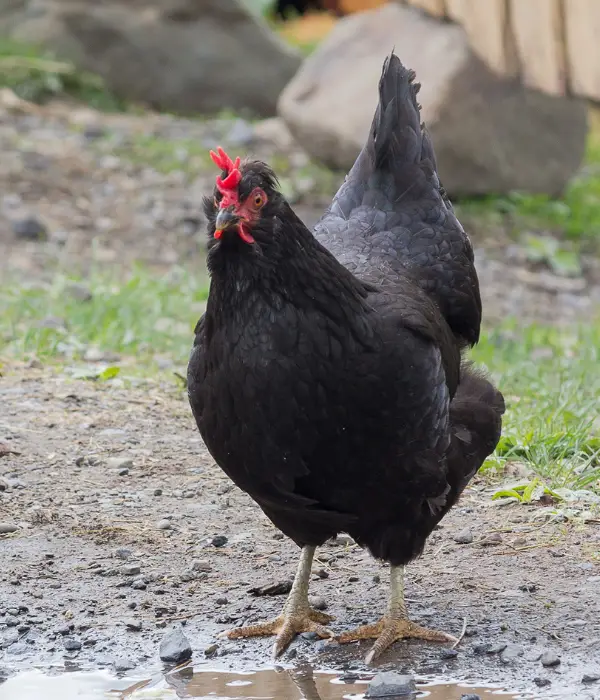
Australorps are one of the excellent chicken breeds for urban backyards. Farmers loves them due to their friendly nature, exceptional egg production, and adaptability to various environments.
Temperament and Personality
Australorps are known for their calm and gentle demeanor, making them suitable for families with children. They integrate well into mixed flocks and are generally non-aggressive, fostering a harmonious backyard environment.
Egg Production Performance
Renowned for their prolific egg-laying capabilities, Australorps can produce approximately 250 to 300 large brown eggs annually. They often begin laying around 20 to 22 weeks of age and maintain consistent production throughout the year.
Space and Housing Requirements
Australorps are adaptable to confined spaces, requiring about 4 square feet per bird in the coop and 8 to 10 square feet in the run. Their medium size makes them ideal for urban backyards with limited space.
Climate Adaptability
These hardy birds thrive in various climates. Their dense plumage provides insulation during cold winters, and with adequate shade and ventilation, they cope well with hot summers.
Low Maintenance Care
Australorps are robust and low-maintenance, making them perfect for novice chicken keepers. They forage efficiently, reduce feed costs, and possess strong immune systems that protect them from common poultry diseases.
Australorps offer exceptional egg production, gentle temperaments, and adaptability, making them a top choice for urban backyard chicken enthusiasts.
8. Cochin Chickens
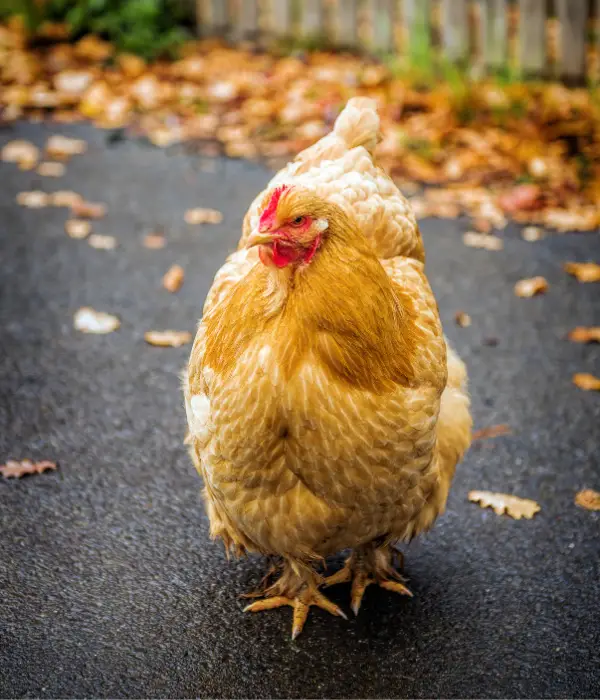
Cochin or bantam Cochins are also one of the best chicken breeds for urban backyards. They are lovely chickens.
Temperament and Personality
Cochin chickens are renowned for their gentle and friendly nature, making them excellent companions for families, especially those with children. Their calm demeanor allows them to be easily tamed and handled, enhancing their appeal as pets.
Egg Production Performance
While Cochins are not prolific layers, they typically produce around 150-180 medium-sized brown eggs annually.
Although their egg production is modest compared to other breeds, their nurturing disposition often leads them to become broody, making them exceptional mothers for hatching and raising chicks.
Space and Housing Requirements
Despite their large size, with roosters averaging 11 pounds and hens around 8.5 pounds, Cochins are not adept fliers and prefer to stay close to home.
This behavior makes them suitable for urban backyards, as they are less likely to roam or attempt to escape enclosures. However, their substantial size necessitates more space per bird compared to smaller breeds.
Climate Adaptability
Cochins are well-suited for colder climates due to their abundant feathering, which provides excellent insulation. However, their dense plumage requires attention in wet conditions to prevent matting and potential skin issues.
In hot climates, ensuring they have access to shade and ventilation is crucial to prevent overheating.
Low Maintenance Care
These hardy birds are relatively low maintenance, with their docile nature making them easy to manage. Regular grooming, especially of their feathered feet, is necessary to maintain cleanliness and prevent potential health issues.
Their tendency to broodiness can be advantageous for those interested in natural chick rearing.
9. Silkies
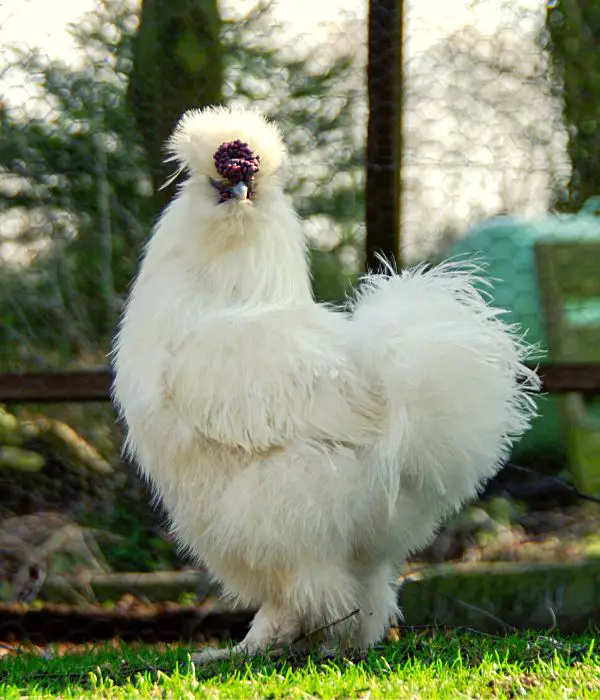
Silkie chickens are one of the best chicken breeds for urban backyards due to several favorable traits:
Manageable Size
Silkies are smaller than standard chickens, with bantam varieties weighing around 32 ounces for hens and 36 ounces for cocks. Their compact size makes them ideal for limited spaces, requiring less room in coops and runs.
Friendly Temperament
Known for their calm and docile nature, Silkies are easily tamed and enjoy human interaction, making them excellent pets for families with children. Their gentle disposition allows them to adapt well to confined spaces typical of urban settings.
Egg Production
While Silkies are not prolific layers, producing approximately 120 small eggs per year, their eggs are of good quality. However, their primary appeal lies in their companionship rather than egg production.
Broodiness
Silkies are renowned for their strong brooding instincts, often used to hatch eggs from other breeds due to their exceptional mothering abilities. This trait can be beneficial for urban chicken keepers interested in expanding their flock naturally.
Unique Appearance
With their fluffy plumage, feathered legs, and distinctive crests, Silkies add an ornamental value to urban backyards, often becoming a conversation piece among visitors.
10. Brahma Chickens
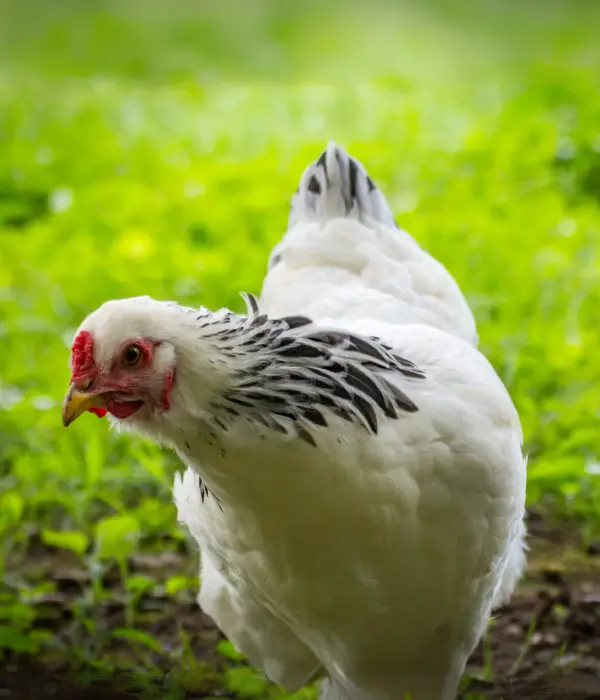
Temperament and Personality
Brahma chickens are known as the gentle giants of the poultry world. Despite their large size, they possess a calm and docile temperament, making them excellent companions for families and suitable for urban backyards.
Egg Production Performance
Brahmas are decent layers, producing medium to large brown eggs. They are particularly noted for laying eggs during the winter months when other breeds may slow down, providing a steady supply of eggs year-round.
Space and Housing Requirements
Given their substantial size, Brahmas require more space than smaller breeds. It’s recommended to provide at least 5 square feet per bird in the coop and ample space in the run to accommodate their need for movement. Their feathered feet can be prone to collecting mud, so a well-drained area is beneficial.
Climate Adaptability
Brahmas are hardy birds, especially suited for colder climates due to their dense feathering. However, in hotter climates, they may require additional shade and water to remain comfortable, as their size and feathering can make them susceptible to heat stress.
Low Maintenance Care
With their robust health and gentle nature, Brahmas are relatively low-maintenance. Regular health checks, a balanced diet, and clean living conditions will keep them thriving. Their calm demeanor also makes them easy to handle, even novice keepers.
Silkie Chickens as Urban Backyard Breeds
Silkie chickens are a popular choice for urban or city backyard flocks due to several appealing traits:
Manageable Size
Silkies are smaller than many standard chicken breeds, with bantam varieties weighing around 32 ounces for hens and 36 ounces for cocks. Their compact size makes them ideal for limited spaces commonly found in urban backyards.
Friendly Temperament
Known for their gentle and friendly nature, Silkies are great companions, especially for families with children. They enjoy human interaction and can be quite affectionate, often being compared to pets rather than typical livestock.
Low Noise Levels
Silkies are generally quieter than other breeds, which is a significant advantage in urban areas where noise can be a concern. Their subdued clucking is less likely to disturb neighbors, making them more suitable for city living.
Broodiness and Egg Production
While Silkies are not prolific layers, averaging about 120 small cream-colored eggs per year, they are renowned for their broodiness and mothering instincts. They can be used to hatch eggs from other breeds, adding value beyond their egg production.
Adaptability to Confinement
Silkies adapt well to confinement, which is beneficial in urban settings where free-ranging isn’t feasible. They are content in smaller coops and runs, provided they have enough space to move comfortably and exhibit natural behaviors.
In summary, both Brahma and Silkie chickens offer unique advantages for backyard keepers. Brahmas provide steady egg production and a gentle demeanor, suitable for those with ample space.
Silkies, with their friendly nature and adaptability to confined spaces, make one of the best chicken breeds for urban backyards, especially for families seeking a docile and engaging addition to their backyard flock.
Managing Your Urban Flock
Rearing a flock of chickens in an urban locale causes thoughtful consideration and regular chicken care. Let’s investigate the critical areas of urban flock management.
Daily Care Routines
Establish a regular daily routine for your urban birds. In the morning, the first thing to do would be to open up the coop and give them fresh water & grain food.
For other types of chickens, checking for any signs of illness or discomfort would be ideal.
Collect eggs at least once a day, preferably in the morning when most of the hens have done their laying. This way, eggs will not get dirty or broken, thus helping to keep a clean coop.
In the evening, check that all the chickens are inside the coop before sunset. This will protect them from night-time predators, which might lurk in urban areas.
Every night before bed, make sure you tie the coop door shut with strong netting.
Space Management Tips
Limited space requires the productive management of an urban backyard. For one chicken, at least 4 sq. ft. of coop area and 8-10 sq. ft. of run area be provided.
By doing this, it becomes possible for the chickens to avoid the constraints that might otherwise come their way and enjoy natural movements with ease.
Another way is that you can vertically grow plants. Grow non-conventional plants such as climbing peas that are easy to maintain and become vertical.
Also, ornamental features such as trellises can be installed to occupy the required space for new plants. Alternatively, selective shrub placement benefits birds only.
By being tactful in performing the right maintenance routines, you can ensure all the areas are clean. The act of keeping your coop and run litter-free is very important for its overall functioning.
This also saves you from the embarrassment of such installations attracting your neighbors who are sensitive to the slightest foul odor.
One method used for the management of eco-resources is grass rotation. Rotating plants in the run areas is one method of other plants’ growth areas.
Use two-run installations to control bird populations and maintain healthy cover crops.
Successful flock management in the city is based on repeatable daily care practices and effective area usage leading to the chickens’ optimum development and the absolute cooperation of the neighbors.
FAQs
What is the minimum space requirement per chicken in an urban backyard?
With standard-size chickens, it is necessary to have at least 4 square feet for each hen in the coop and 10 square feet in the run. You require less space if you want to use the Bantam breeds.
In the coop, they need about 2 square feet per bird and 5 square feet in the run. Remember that chickens are happier and healthier when they have a larger space.
How long does it typically take for backyard chickens to start laying eggs?
A majority of the chicken races start to lay eggs at any age between 18 and 22 weeks.
However, several factors can affect a bird’s ability to lay by season, light hours, and breed type. Also, the taste of hybrids may be faster than the way heritage breeds develop.
Can different chicken breeds live together in the same coop?
Different chicken breeds can live together in harmony in one coop. But make certain that together to keep from being bullied, birds of similar sizes are kept.
Experiment with breeds that are friendly together and avoid mixing aggressive ones with docile ones.
How do urban noise and activity levels affect backyard chickens?
Most chicken breeds can live in urban areas. Usually, the typical city sounds circulate through their shells, for example, traffic, and lawnmowers.
Some hen breeds that are calmer, like Buff Orpington or Australorps, can bear urban tension without so much trouble.
What’s the average lifespan of backyard chickens, and how long do they lay eggs?
Backyard chickens live 5-10 years, while owners give extra attention to mature breeds.
In the 1st and 2nd years of the chicken, the most quantity of egg-laying happens.
Following that, the production rate goes down slowly. A few heritage breeds are, with their having the phenomenon of slow laying, only for the longest time.
How can I protect my backyard flock from extreme temperatures?
To manage heat stress, make sure your chickens have a very good quality shelter with ventilation. Use draft-free staging in your cold hardy chicken breeds with small combs in the areas you serve them.
A cold-day therapy that is noted for its capabilities of dispersing heat in poultry species is a worth considering step too. The free flow of cool and fresh air will be established.
Also, among the birds, the water from the sources will not be polluted, and the birds will not get the bacterium or virus transmitted directly. In the hot summer, the birds must have a lot of water and shade.
Conclusion
Embarking on your journey of urban chicken-keeping is a fascinating adventure that causes the choice of a breed most appropriate for your backyard.
Suitable urban farming breeds include Rhode Island Reds and Brahmas. To effectively raise your chickens, you must first consider them after you get some understanding of their needs and their abilities.
When making your decision, it is recommended to evaluate the criteria of egg-laying ability, the space needed, and the nature of the individuals.
The Buff Orpingtons are fluffy and friendly, while the Easter Eggers lay colorful eggs, making this adventure exciting.
You can go ahead with your backyard chicken life journey. Just visit your local store or a trusted employee at a reputable breeder’s shop to choose one you have met.
Prepare to enter your urban home with these little creatures, gardening some diverse landscapes and creating a symbiotic relationship with you as a micro-urban pioneer.
